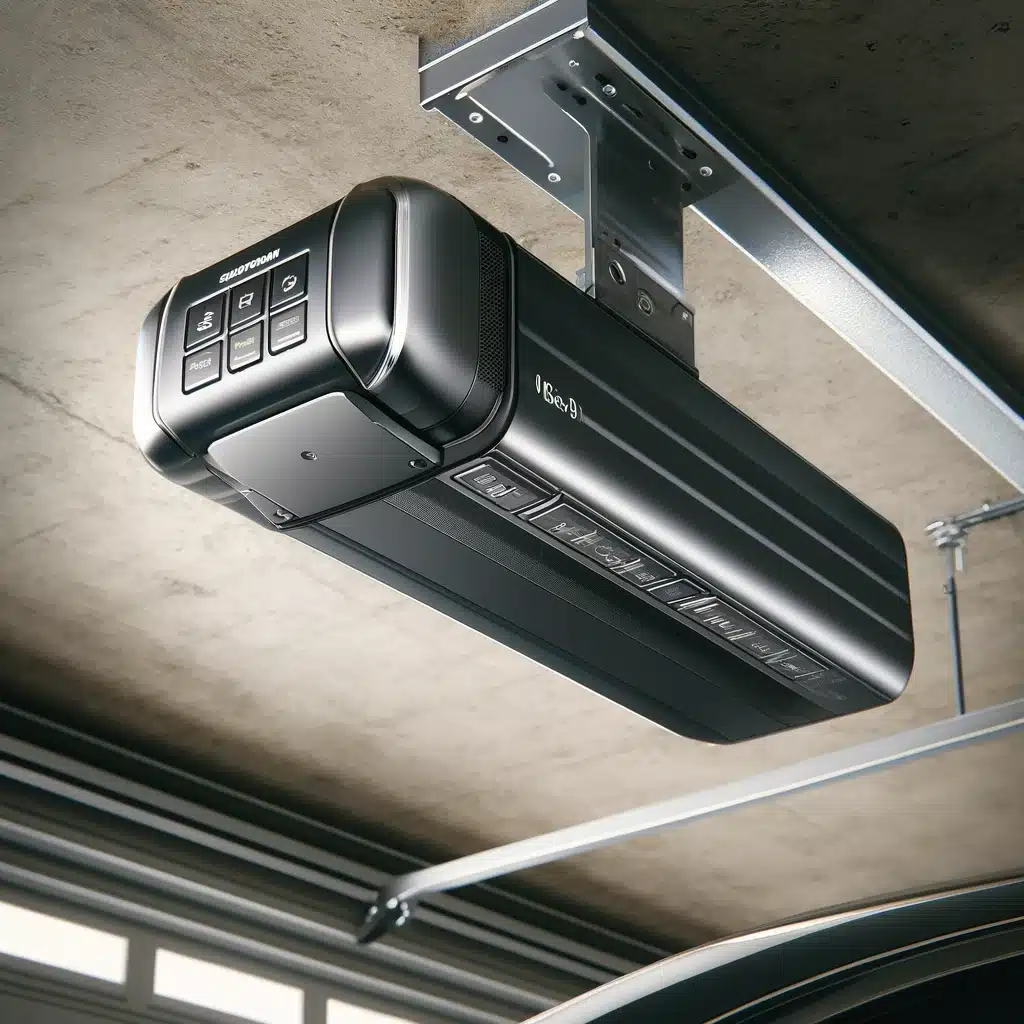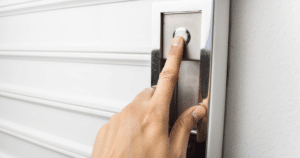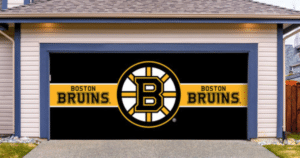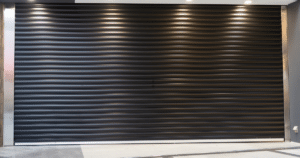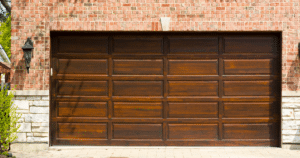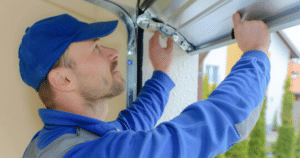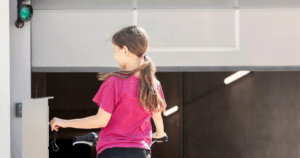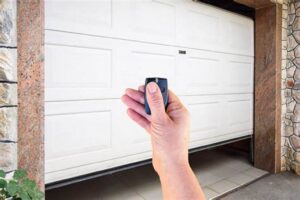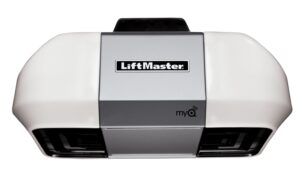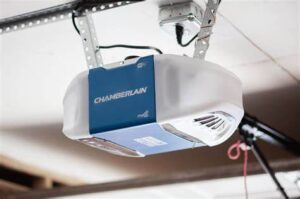When it comes to Craftsman garage door opener troubleshooting, you may find yourself facing several typical problems that can be frustratingly complex to diagnose. The Craftsman brand is synonymous with durability and reliability, yet even the most dependable equipment can encounter issues over time. Fortunately, many common problems have straightforward solutions that can save you both time and money. Read on for detailed, step-by-step troubleshooting tips that will help you get your garage door opener back in perfect working order.
Craftsman garage door openers are known for their robust construction and longevity, but like any mechanical device, they can develop faults. From remotes that don’t respond to doors that won’t open or close properly, the range of issues varies. Understanding the root of these problems is crucial to quick and effective resolution.
Whether you’re dealing with a door that won’t close all the way, a remote control that has stopped working, or strange noises during operation, this guide will provide you with practical solutions.
How to Fix Common Issues: Craftsman Garage Door Opener Troubleshooting Guide
Craftsman garage door opener troubleshooting can be frustrating, especially when your garage door refuses to operate correctly. Whether it’s a door that won’t open or close, a remote that doesn’t respond, or mysterious noises during operation, many common problems have straightforward solutions. This comprehensive guide will walk you through diagnosing and fixing the most prevalent issues with Craftsman garage door openers, helping you restore functionality quickly and efficiently.
Garage Door Won’t Open or Close
When your Craftsman garage door opener fails to operate properly, preventing the door from opening or closing, it can be both inconvenient and frustrating. Understanding the root causes of such issues is key to quick and effective troubleshooting. Here’s a deeper look into common problems and their solutions:
Remote Control Issues
- Battery Replacement: One of the simplest fixes is replacing the batteries in your remote control. Over time, batteries weaken and lose their ability to send a strong signal to the garage door opener. If your door responds inconsistently or not at all, change the batteries, ensuring that they are installed correctly according to the polarity indicated.
- Signal Interference: Sometimes, physical obstacles or electronic interference can block the signal from your remote to the opener. Make sure there are no new obstructions or electronic devices nearby that could be causing interference.
Power Disruptions
- Check the Power Supply: First, ensure that the garage door opener is plugged into a functioning electrical outlet. You can test the outlet by plugging in another device to see if it works. If the outlet is not delivering power, look for issues in your home’s circuit breaker or fuse box. A tripped circuit breaker or a blown fuse can easily disrupt power to your garage. Reset the breaker or replace the fuse and try operating your garage door again.
- Cord and Plug Integrity: Inspect the power cord to the garage door opener for any signs of damage or wear. If the cord is frayed or damaged, it may need replacing. A loose plug can also cause intermittent or no power, so make sure the plug fits securely into the outlet.
Motor Malfunctions
- System Reset: If the motor seems unresponsive, resetting the entire system might resolve underlying glitches. To reset your Craftsman garage door opener, you generally need to disconnect it from the power source for a brief period (about a minute), and then reconnect it. This can clear the opener’s internal memory and may solve minor electronic issues.
- Motor Issues: If the motor does not activate after trying the aforementioned steps, it could indicate a more serious malfunction, such as a burnt-out motor or a faulty motor capacitor. These components can wear out over time or due to overuse.
- Manual Release: If the garage door still won’t operate via the remote or keypad and you need immediate access, use the manual release handle to open or close the door manually. This handle is typically a red cord hanging from the opener, which disengages the motor from the door.
Quick Fixes Summary:
- Replace the batteries in your remote to ensure strong signal transmission.
- Verify the power source by checking the outlet, circuit breaker, or fuse box for issues.
- Reset your garage door opener using the manufacturer’s instructions to resolve minor electronic problems.
Noisy Garage Doors
A noisy garage door can be more than just an annoyance; it can also signal potential issues that may require immediate attention. If your garage door starts making unusual noises like grinding or squeaking, it’s important to address these signs promptly to prevent further damage. Here’s a more detailed look at common causes and their respective maintenance solutions:
- Loose Hardware: Over time, the hardware parts of a garage door, such as screws, nuts, and bolts, can become loose due to the vibrations and movement of daily operations. This can lead to rattling or banging sounds as the door cycles.
- Worn Rollers: The rollers help the door to move smoothly along the track. If these rollers wear out or get dirty, they can begin to make grinding noises. Worn nylon rollers often produce a squeaking sound, whereas worn steel rollers may create a more grinding noise.
Maintenance Tips to Reduce Noise:
- Tighten All Bolts and Screws: Regularly inspect the bolts and screws on your garage door and tighten them if loose. Use a socket wrench or screwdriver to secure all visible hardware. This includes checking the brackets holding the door tracks, the hinges that hold the door panels together, and the mounts that hold the garage door opener in place.
- Lubricate the Rollers and Other Moving Parts: Proper lubrication is crucial for maintaining a quiet and smooth operation. Use a garage door-specific lubricant to oil the rollers, hinges, and tracks. Avoid using WD-40 or grease as these can attract dust and debris, which further contributes to noise and deterioration. For rollers, apply just enough lubricant to coat them lightly without causing drips.
- Inspect and Replace Worn Rollers: Check the condition of the rollers. If they are visibly worn, cracked, or chipped, they should be replaced. Roller replacement can vary depending on the type of rollers your door uses (steel versus nylon), and while it’s possible to do this yourself, hiring a professional is recommended if you’re unsure.
- Lubricate the Springs and Cables: The springs and cables help to lift and lower your garage door smoothly. These can also become noisy if they aren’t lubricated regularly. Apply a light coat of lubricant to the torsion springs, which you’ll find above the door, and the extension springs, located alongside the upper tracks on both sides. Do not attempt to replace these on your own, as they are under high tension and can be very dangerous.
- Check the Door’s Balance: An unbalanced garage door can also lead to excessive noise. Disconnect the opener by pulling the release handle (usually a red cord), and manually move the door halfway up. If it doesn’t stay put, the springs are likely unbalanced and need adjustment. This is best left to professionals.
Garage Door Reverses Before Hitting the Floor
If your garage door starts to close but then reverses before it reaches the floor, this can be a frustrating issue. Typically, this problem is related to safety mechanisms that are designed to prevent injury or damage. Understanding the common causes and how to resolve them can help ensure that your garage door operates safely and reliably.
- Misaligned Safety Sensors: Garage doors are equipped with safety sensors located near the base of the door tracks. These sensors emit an infrared beam that, when interrupted, prevents the door from closing on objects, animals, or people. If these sensors are misaligned, even slightly, they can send false signals that trigger the door to reverse.
- Blocked Tracks: Another common issue is obstructions in the tracks. Small objects, accumulation of dirt, or even built-up debris can obstruct the door’s path and trigger a reversal.
Solution Steps:
- Check and Realign the Safety Sensors: Start by inspecting the sensors located at the bottom of each side of the garage door. Ensure that they are facing each other directly across the span of the door. If they seem out of alignment, gently adjust them until the LED lights on both sensors are solid, indicating that the sensors are aligned and unobstructed.
- Ensure the Tracks Are Clear: Examine the tracks on both sides of the garage door to ensure they are free of debris, dirt, or any objects that might impede the door’s movement. Use a brush or cloth to clean out the tracks and remove any obstructions. Also, check for any bends in the tracks that might affect the door’s operation and correct them if possible.
Remote Control Malfunctions
Remote control malfunctions in garage door openers can cause significant inconvenience and may result from a range of issues including range and interference problems. Alongside this, issues with the door opener not working with the keypad or wall switch can also occur, typically due to electrical problems. Understanding how to diagnose and resolve these issues can help restore functionality to your garage door system.
- Range Issues: If your remote only works when very close to the door, it could be a range issue. Range problems are often due to battery power or interference from other wireless devices.
- Interference Problems: Today’s homes are filled with wireless signals that can interfere with your garage door’s remote. From Wi-Fi routers to baby monitors, many devices can disrupt the signal. Identifying and moving other wireless devices away from your garage door opener can improve performance.
- Reprogramming the Remote: Reprogramming your garage door remote can resolve issues caused by interference or after changing batteries. Each model of garage door opener has a specific method for reprogramming, so consult your user manual for detailed instructions. Typically, this involves pressing a learn button on the garage door opener and then a button on the remote.
- Replacing the Remote: If reprogramming does not fix the problem, the remote itself might be defective or too old. Replacing the remote with a new one that is compatible with your garage door opener model is often the simplest solution.
Door Opener Doesn’t Work With the Keypad or Wall Switch
- Faulty Keypad: Keypads can wear out over time or suffer from exposure to extreme weather, leading to non-responsiveness. Testing the keypad with a new set of batteries can rule out a simple power issue. If the problem persists, replacement might be necessary.
- Wiring Issues: Loose or damaged wires between the motor unit and the keypad or wall switch can prevent operation. This could be due to age, rodent damage, or interference from renovations or other repairs.
Troubleshooting Tips:
- Inspect and Replace Faulty Wiring: Carefully inspect all visible wiring for signs of damage or wear. If you’re comfortable with basic electrical tasks, you can tighten loose connections or replace damaged wires. Turn off power to the unit at the circuit breaker before attempting any repairs to avoid electric shock.
- Replace the Keypad: If the keypad is non-responsive and changing the batteries doesn’t help, replacing the keypad is the next best step. Ensure that the new keypad is compatible with your garage door opener model.
- Test the Wall Switch: If the door opener does not respond to the wall switch, try removing the switch from the wall and touching the two wires together. If the opener works, the switch is likely faulty and needs replacement.
For effective Craftsman garage door opener troubleshooting, it’s crucial to understand the symptoms of common problems and know how to address them quickly. This guide should help you keep your garage door in optimal working condition, ensuring reliability and safety. If you encounter more complex issues, consider consulting a professional for comprehensive maintenance or repair.
Advanced Craftsman Garage Door Opener Troubleshooting: When to Go Deeper
When your Craftsman garage door opener continues to malfunction despite basic troubleshooting efforts, it might be time to examine the mechanical and electrical components more closely. Issues like persistent noises, intermittent operation, or total failure to operate can indicate deeper problems within the motor, circuit board, or wiring.
Safety Precautions for Handling Electrical Components
Before you proceed, safety must be your top priority:
- Power Safety: Always disconnect the power to the garage door opener before attempting any repairs to avoid electric shock.
- Tool Safety: Use insulated tools if possible, and wear protective gloves and eyewear to protect against sparks or debris.
- Knowledge Safety: Familiarize yourself with your Craftsman model’s specific electrical setup by consulting the user manual.
Advanced Troubleshooting Steps
- Inspect the Circuit Board: Look for signs of burnt components or loose wiring that might require soldering or replacement.
- Check the Motor: If the motor does not run or hums without turning, it might need to be tested with a multimeter or replaced.
- Examine Mechanical Parts: Gears and other moving parts inside the opener can wear out and may need lubrication or replacement.
Knowing When to Call a Professional
While DIY repairs can be cost-effective, some situations should be handled by professionals:
- If the troubleshooting steps involve complex wiring or circuit replacements.
- When adjustments involve the tension springs, as these can be dangerous without proper tools and expertise.
- If the opener has warranty coverage that might be voided by self-repairs.
In-depth Craftsman garage door opener troubleshooting can extend the life of your garage door system and enhance its functionality. However, if you’re unsure about any step or the problem persists, seeking professional help is advisable. Ensuring the longevity and safety of your Craftsman opener is paramount, and sometimes that means relying on expert service.
FAQs for Craftsman Garage Door Opener Troubleshooting: Expert Solutions
What should I do if my Craftsman garage door opener won’t respond to the remote or wall switch?
First, ensure that the power source is intact and that the opener is plugged in. Check the circuit breaker or fuse, as a simple reset might resolve the issue. If the power supply is not the problem, inspect the remote batteries and replace them if necessary. Lastly, reprogramming the remote or wall switch could also fix the issue.
How can I reset my Craftsman garage door opener?
Resetting your Craftsman garage door opener is straightforward. Unplug the unit from the power outlet, wait for about a minute, and then plug it back in. This process can reset the internal circuitry and often resolves minor glitches.
What are the signs that my garage door sensors are misaligned?
Misaligned sensors commonly manifest as the garage door refusing to close completely or reversing immediately after beginning to close. Check for small indicator lights on the sensors; if they are blinking, it’s a clear sign of misalignment. Realigning the sensors until the lights are steady usually solves this problem.
How often should I perform maintenance on my garage door opener?
Regular maintenance, performed annually, ensures longevity and optimal functioning of your garage door opener. This includes lubricating moving parts, checking and tightening all hardware, and testing the balance of the garage door.
Can I replace a Craftsman garage door opener motor myself, or should I call a professional?
While some garage door repairs are suitable for DIY, replacing a motor involves electrical knowledge and can be hazardous. For safety and warranty purposes, it’s recommended to contact a professional when replacing major components like the motor.
Conclusion
Regular maintenance and knowing how to troubleshoot common issues are vital for the longevity and efficient operation of your Craftsman garage door opener. While many minor issues can be resolved at home, more complex problems should be handled by professionals.
For expert assistance and reliable garage door repair in Kansas City, contact Team Taylor Doors today. We’ll ensure your garage door opener operates smoothly and safely, giving you peace of mind and extending its lifespan. Don’t wait—reach out to us now for professional service!
End Note
For dependable service and expert advice on your garage door opener, consider Team Taylor Door, the premier choice for garage door repair and maintenance in Kansas City. Their deep expertise with Craftsman products and unwavering commitment to customer satisfaction make them the go-to professionals for ensuring your garage system works flawlessly. Contact Team Taylor Door for reliable and skilled support tailored to your needs.

